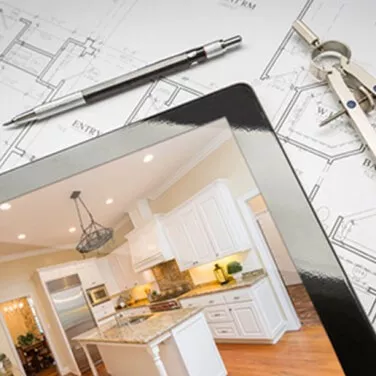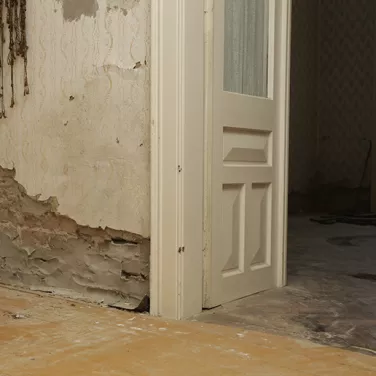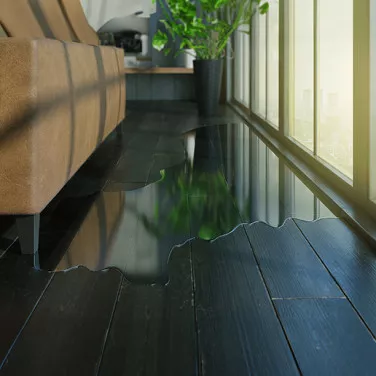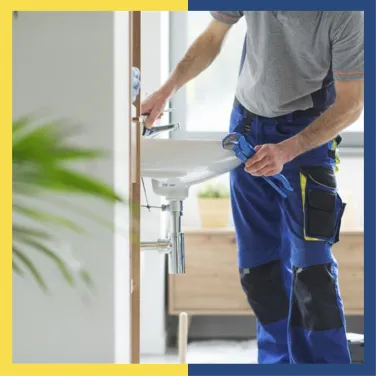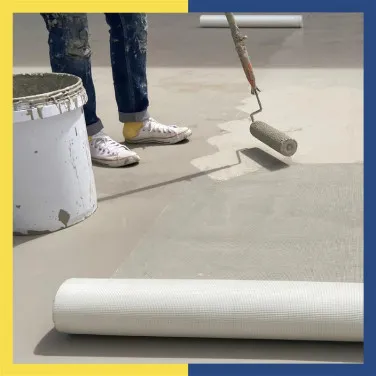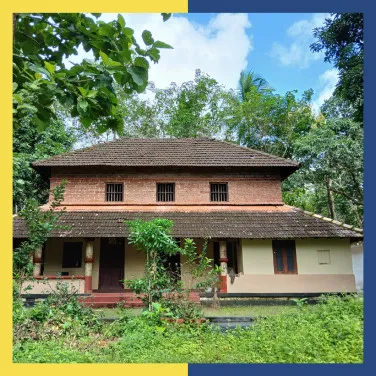

Steps for Waterproofing During Construction or Home Renovation
Essential steps for waterproofing during construction or home renovation
Lack of proper waterproofing can have negative consequences for your home. This guide offers step-by-step guidance on preparation, maintenance, and contractor queries for effective waterproofing.
Whether constructing a new house or renovating an old one, it is essential to protect it from water-related damage. Issues like leakage and seepage can cause serious harm to your house over time, which can also lead to costly repairs. To prevent such hassle, consider waterproofing for a smart and long-term solution against water-related issues.
Effective measures like waterproofing during construction or renovation create a protective barrier preventing water infiltration, thus ensuring a durable, safe, and dry space.
Let us learn about the importance of waterproofing, the consequences of neglecting it, things to factor in, and more in detail.
Importance of waterproofing
Waterproofing protects buildings from water intrusion and several related issues. Below are the reasons why waterproofing during construction or renovation is important -
-
Durability and longevity - Proper waterproofing extends the lifespan of your home. It acts as a protective barrier against water infiltration, preventing potential damage to all critical areas of a house.
-
Mould and mildew prevention - Waterproofing helps create a dry and moisture-resistant environment, preventing the growth of mould and mildew. These harmful organisms can compromise indoor air quality and pose health risks to occupants.
-
Cost-effective measure - Investing in waterproofing is a cost-effective preventive measure. It minimises the need for repetitive and costly repairs that may arise due to water damage, saving both time and money in the long run.
-
Protection against interior damage - Proper waterproofing safeguards interior spaces from water-related damage. It prevents issues like water stains, peeling paint, etc., preserving the aesthetics and functionality of the living or working environment.
-
Resilience in various environments - Waterproofing in diverse climates and weather conditions shields buildings from the adverse effects of rain, heat, dust, etc. This ensures that the building remains resilient regardless of external environmental challenges.
-
Comfortable and secure living - A waterproofed building provides a comfortable and safe environment. It reduces the risk of water-related damages and contributes to the overall well-being of occupants by maintaining a dry and secure space.
Consequences of inadequate waterproofing
Waterproofing is often ignored due to the lack of awareness. Persistent water infiltration and inadequate waterproofing can lead to -
1. Leakage
-
Kitchen - Risk of water damage to cabinets, appliances, and flooring which can potentially lead to frequent repairs or replacements.
-
Bathroom - Water leakage can damage walls and cabinetry and cause mould growth, posing safety hazards.
-
Roof - Leaks can result in water seepage into the interior, damaging ceilings and electrical components.
2. Seepage
-
Walls - Moisture seeping through walls can lead to discolouration, peeling paint, and the weakening of your house from within, affecting the aesthetics and stability of the building.
-
Exterior and interior surfaces - Seepage can damage exterior finishes and interior surfaces, causing unsightly stains, unwanted smells, plaster deterioration, and more.
3. Mould and mildew
-
Aesthetics - Mould and mildew growth on walls, ceilings, and floors disturb the visual appeal, creating an unpleasant living environment.
-
Pets and children - Pets and children and usually curious and may try to touch affected surfaces or accidentally ingest damaged materials, leading to potential health issues.
-
Health risk - Prolonged exposure to mould and mildew can trigger asthma, allergies, skin irritations and other problems, posing significant health risks to occupants.
-
Discolouration and peeling - Inadequate waterproofing leads to discolouration of walls, ceilings, and floors. It is not only unattractive but also indicates water infiltration that is causing potential damage to the surfaces. The moisture that seeps through the surface can cause the paint to lose its adhesion, leading to flaking or peeling. This is visually unappealing and can reduce the aesthetic and monetary value of the property.
-
Damage to furniture and tiles - Excessive moisture seepage and leaks can have serious consequences on furniture and tiles. When furniture is exposed to moisture for prolonged periods (usually due to contact with damp walls), it can cause the wood to warp, swell, and twist, which can lead to costly repairs or even replacement. Similarly, tiles can also become loose or even crack due to moisture, leading to potential risks and further damage to the surrounding areas.
To prevent such inconveniences, ensure that you do not skip waterproofing during construction or home renovation projects.
However, before you talk to a certified contractor, check out this step-by-step guide to ensure lasting quality and adequate waterproofing.
Steps of waterproofing the house during construction
Let's look at the necessary steps for waterproofing your house during construction -
1. Contact an experienced contractor - The first step is to hire an experienced contractor. They bring expertise to the table, can assess your specific house waterproofing needs, and provide a solution accordingly. Ask your contractor for necessary details like -
-
Providing references for previous projects
-
The type of waterproofing required, considering the specific needs of different areas in your home
-
Discuss their approach in addressing post-project maintenance or service requests that may arise after completion
2. Ensure the foundation is waterproofed - Waterproofing the foundation is a critical step in preventing water damage. Also note that foundation waterproofing during construction can only be effectively implemented at this stage. This process prevents any potential damage to your house due to groundwater infiltration (i.e. rising wall dampness). By creating a barrier against moisture, foundation waterproofing safeguards your home from within, ensuring a stable and healthy indoor environment.
3. Ensure other areas are covered - Here are the other areas in your new home that need a comprehensive waterproofing solution -
-
Roofs - Waterproofing the roofs prevents moisture infiltration that can damage the ceiling and affect the house due to leakage.
-
Walls - Exterior waterproofing on walls prevents water-related damage, mould growth, and deterioration of interior appearance, enhancing durability and indoor air quality.
-
Bathrooms - Bathrooms are constantly exposed to water. So, waterproofing is necessary to prevent water seepage through walls, floors, and other vulnerable places.
-
Kitchen - Specific areas in the kitchen, such as the sink and countertop, come in direct contact with water regularly. Without proper waterproofing, these areas will start showing signs of damage.
-
Water tanks - To prevent leakages and preserve the quality of stored water, water tanks require effective leakproofing/waterproofing from the inside and the outside.
Steps of waterproofing your house during renovation
If you have missed out on waterproofing during construction, you can still invest in it during home renovation. Here are the steps to waterproof your house while renovating it -
-
Assess water damage - Begin by inspecting your home for any existing water-related damage. Look for signs such as dampness, water stains, mould growth, etc. Identifying these issues will help you understand the extent of the problem and the related repairs.
-
Identify vulnerable areas - Take note of vulnerable areas in your home, such as the kitchen, bathroom, walls, and roof. These areas are more prone to water intrusion and should be a priority during the renovation process. Look for cracks, gaps, or spaces that might allow water to penetrate.
-
Consult a certified contractor - It's important to seek the advice of a certified contractor before starting the waterproofing process. They can inspect your home for any hidden damages or repairs and address them beforehand. This will increase the effectiveness of the waterproofing, ensuring the durability of your house.
-
Address drainage issues - Evaluate the drainage systems around your home. Poor drainage can lead to water pooling, causing potential damage to your house. During renovation, consider improving or adding drainage solutions. Redirecting water away from vulnerable areas will help in preventing water-related problems.
-
Ensure proper ventilation - Adequate ventilation prevents moisture buildup inside your home. During renovation, assess and improve ventilation in areas prone to dampness, like kitchen and bathrooms. Proper airflow helps dry out any moisture, thus reducing dampness.
Maintenance considerations
A crucial step amidst all this is maintaining the waterproofed area for lasting durability. Here are a few things to consider -
-
Inspecting for wear and tear - Regularly inspect key areas of your home that come in direct contact with water, such as roofs, walls, bathrooms, and kitchens, for any visible signs of wear and tear. Look out for any water leakages or seepage. Promptly address any issues you spot to stop damages from escalating, maintaining the effectiveness of the waterproofing over time.
-
Proper drainage - To prevent water pooling around your house, ensure that drains and gutters are in good working condition. Periodically check for clogs, debris, or blockages that restrict water flow. Well-maintained drain systems prevent water collection/pooling, reducing the risk of water-related damage and preserving the effectiveness of the waterproofing.
-
Optimal ventilation - Maintaining proper ventilation within your home will control moisture levels and prevent water dampness. It also helps reduce the chances of mould growth and other moisture-related problems. Ensure that vents are not blocked and are functioning well, especially in areas prone to high humidity, such as bathrooms and kitchens. This approach contributes to the longevity of your waterproofing by keeping moisture at bay.
Secure and fortify your home with waterproofing
To ensure a secure, water-resistant, and durable home, it is important to implement all the steps and measures related to waterproofing. Also ensure that the materials used by your contractor are of the highest quality.
To get your house waterproofed, you can consult experts at Dr. Fixit by filling out the form given below. Be it waterproofing during construction or renovation, our experts will provide you with customised waterproofing solutions for your specific needs.
FAQs
FAQ#1 - What are the common signs that the house needs waterproofing?
Signs like peeling paint, water stains, cracks, etc., signal the need for house waterproofing. These issues highlight potential damage caused by water infiltration. Musty or mouldy odours, especially in poorly ventilated areas, are another sign that must not be ignored. Addressing these signs promptly not only preserves the aesthetic appeal of your home but also safeguards against health hazards caused by mould and mildew. Regular checks and proper waterproofing increase the durability and longevity of your home, protecting it from water-related issues.
FAQ#2 - Should I waterproof during or after construction?
Whether during or after construction, waterproofing is required to protect your property in every weather. Waterproofing during construction provides a strong defence against water damage from the beginning, ensuring the longevity of the building. However, post-construction waterproofing is also possible by addressing existing issues, consulting a certified contractor, and implementing the right waterproofing solutions.
FAQ#3 - Is waterproofing a one-time investment, or does it require regular maintenance?
Usually, waterproofing is a one-time investment. It serves as the best defence against water damage, ensuring that your house remains protected for a very long time. However, due to environmental factors and wear, waterproofed surfaces may need periodic maintenance. Regular inspections and touch-ups will address evolving issues and continued protection.
Get Professional Waterproofing Solutions Today
Fill The Form below to took free site evaluation by Dr. fixit point safe painting service expert
नवीकरण
प्रश्न जो आपको अपार्टमेंट खरीदने से पहले एक सोसाइटी मैनेजर से बिल्डिंग के मरम्मत के बारे में पूछना चाहिए
नवीकरण
घरों का निरीक्षण क्यों किया जाता है और इसके माध्यम से क्या प्राप्त किया जा सकता है
Get Professional Waterproofing Solutions Today
Fill The Form below to took free site evaluation by Dr. fixit point safe painting service expert


















